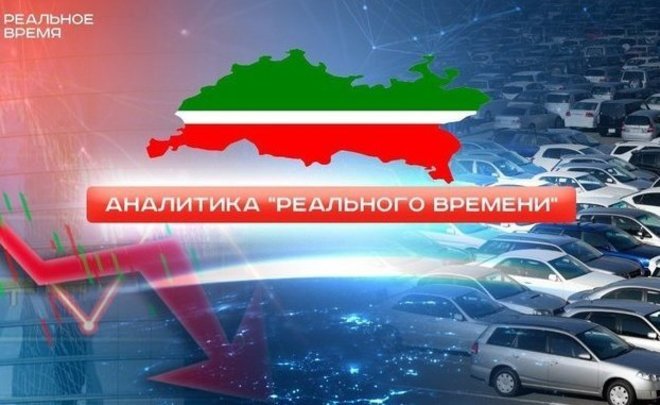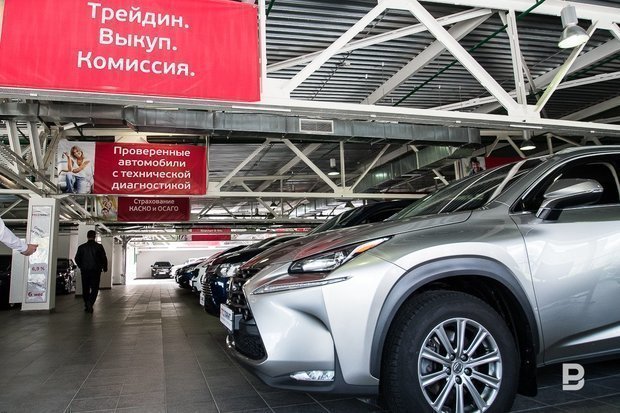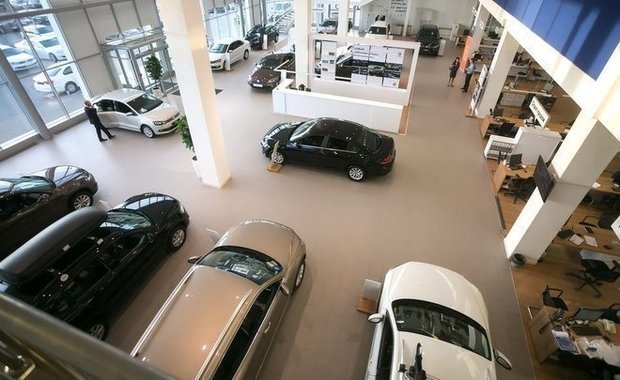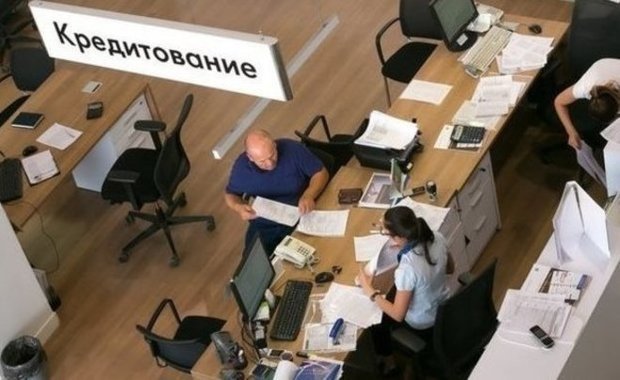Realnoe Vremya analytics: what will Tatarstan citizens drive in 2023?
Residents of the republic will change cars less often and will start saving on their maintenance and repair

The fleet of passenger cars in Tatarstan is going to shrink and get older. So far, the republic holds the lead in the ranking of regions with the youngest fleet, second only to Moscow. The reason for the love of Tatarstan residents for new cars, the average age of cars in the region, and how sanctions are affecting the consumer behaviour of Russians — read in the review by the analytical service of Realnoe Vremya.
According to Autostat Info agency, 1,31 million passenger cars (1,314,929 units) were registered in Tatarstan in the first half of 2022. Over the year, the fleet of passenger cars in the republic has decreased by 0,4%. At the end of the first half of 2021, there were 1,32 million passenger cars (1,320,451 units) in the region. Foreign cars predominate in the fleet — they account for 58,5% (769,1 thousand cars), Russian-made cars — 41,5% (545,8 thousand cars).
The reduction of the fleet in the republic is due to a decline in the number of registered Russian cars (their number has decreased by 1,2% from last year's mark of 552,4 thousand units), explains the press service of Autostat Info. The segment of foreign cars, on the contrary, has shown a slight increase from last year's figure — 768,1 thousand units.
In the first three quarters of 2022, 16,776 passenger cars were sold on the Tatarstan market. The sales structure is traditionally dominated by cars with gasoline engines (15,717 units). In 9 months of 2022, only 900 diesel cars and 38 “clean” electric vehicles were sold.

Moscow remains the largest regional market in the country, where 75,2 thousand new cars were sold from January to September, which is by 55% less than the same result in 2021. The second place in this rating belongs to Moscow Oblast, the indicator of which is 40,3 thousand units (-61,3%). These two regions account for about a quarter of the entire new car market in the country.
The increase in car prices, the decline in purchasing activity of the population, and the general alarming background will contribute to a decrease in the registered fleet of passenger cars in the whole country, the press service of Autostat Info forecasts.
Today, 43,7 million passenger cars are registered in Russia. According to various estimates, the sales of new cars will not exceed 600 thousand in 2022. This will lead to that the registered fleet will not receive a significant amount of cars this year. The operated fleet of passenger cars in the country is estimated at 35,5 million cars. Due to that car owners will use their cars longer, the volume of the moving fleet will not be reduced immediately, Autostat Info experts explain. It will get older and begin to decrease noticeably in 3-5 years (by 350-500 thousand cars annually).
The share of Russian and Chinese brands in the volume of sales in the car market will grow. For example, the registration of Lada passenger cars on the market is steadily growing after the sales failure that occurred from March to April, when the volume of cars sold decreased from 17,268 to 6,465 units. Already in May, 6,709 Lada cars were sold, in June — 7,961 units, in July — 10,467 units, in August — 15,722 cars, and in September — 17,965 units.

According to the results of the three quarters of 2022, the share of Russian brands in sales in the Russian car market amounted to 26,17% (122,818 cars were sold in the first 9 months of 2022). The share of Chinese brands in the total car market is 14,26% (66,953 units sold). According to this indicator, the “Chinese” are still lagging behind Korean brands, which sold 107,212 cars in January-September of this year and took a share of 22,84%.
However, the growth of the share of Russian brands has objective limitations — AvtoVAZ cannot constantly increase its share in the car market due to production restrictions. The hopes that many experts associated with Chinese brands and their active expansion into the Russian car market have not yet been justified, the press service of Autostat Info says. Their sales are growing: for example, from August to September, the growth was +96% — from 6,259 to 12,264 units. But this growth is not explosive, although it sets a long-term trend.
Tatarstan ranks seventh in the number of passenger cars among the regions of Russia
According to Autostat Info, the largest fleet of cars today is in Moscow (almost 4 million cars), the second is in Moscow Oblast (2,7 million cars), Krasnodar Krai is the third (1,9 million cars). Tatarstan is the seventh, it is slightly ahead of Bashkortostan, where 1,29 million cars are registered, and Samara Oblast, where 1,05 million cars are registered.
The average age of a car in Tatarstan is 10,6 years
In 2019, Tatarstan was the region with the youngest fleet: the average age of passenger cars registered here, according to the analytical agency AUTOSTAT, was 10 years. By this indicator, the republic has overtaken even the capital, where the average age of the car was estimated at 10,4 years. But since 2020, the fleet of Tatarstan has begun to age, and Moscow has become the first.
The average age of passenger cars in Russia today is 14 years. But in most regions of Russia, the fleet is older than the national average. The oldest cars are registered in the Far East. In seven regions of the Far Eastern Federal District, the average age of a car exceeds 20 years. Kamchatka is the leader here (24,4 years).
Tatarstan is in the top for car loans
The “young” fleet of Tatarstan can partly be explained by the love of the inhabitants of the republic for car loans. According to the National Bureau of Credit Histories (NBKI), the largest number of car loans in the regions of the Russian Federation in September 2022 were issued in Moscow (3,26 thousand), Moscow Oblast (2,95 thousand), St. Petersburg (2,66 thousand), as well as in the Republic of Tatarstan (2,58 thousand) and Krasnodar Krai (2,34 thousand).

However, against the background of general anxiety, Russians have begun to take out fewer car loans. The number of car loans issued in September 2022 decreased by 7,3% compared to the previous month and amounted to 52,7 thousand (in August 2022 — 56,9 thousand). Compared to the same period last year, it decreased even more significantly — by 37,1% (in September 2021 — 83,8 thousand). Compared with the “pre-sanctions” February — by 27,3% (in February 2022 — 72,6 thousand). This trend will continue, experts are convinced.
“And we also have very good roads, it's not a pity to drive expensive cars”
-
-

Azat Timerkhanov head of the press service of AUTOSTAT agency
-
Today, the average age of a passenger car in our country, according to our data, is 14 years. Moreover, over the past five years, this indicator has increased by a year. And this is in a situation when the annual market volume of new cars was 1,3-1,6 million units. In 2022, according to our forecasts, it may drop to a little more than 600 thousand units, and it may take at least 3-4 years to restore at least 1 million units. This means that the rate of aging of the Russian fleet will only increase, because fewer and fewer new cars will arrive to update it.
Yes, in some regions the fleet will be younger, for example, in Moscow, St. Petersburg or Tatarstan, but in the subjects of the Far East, it will remain old, but in the whole country the average age of the park will continue to grow.
The share of “Chinese” will grow in this park, since over the past 2-3 years their sales have been at a fairly high level. In other words, the “Chinese” fleet is replenished with new cars. But this is not enough for domestic brands yet, because they still have a lot of old cars (even from the Soviet period), that is, the degree of retirement from the fleet is quite noticeable.
-
-
-

Albert Bikbov economist and blogger
-
Tatarstan is a region where an extremely simple and cheap Oka car was produced from 1995 to 2006. It is not surprising that due to the availability of this car, many Tatarstan citizens became its owners, for many of whom this car became the first in their lives.
It was Oka that formed and consolidated in the collective unconscious of Tatarstan citizens the craving for buying a new car. The fascination of the elite of the republic with auto racing also contributed to this craving. The desire for a new car became an obsession of Tatarstan residents, because you can't drive fast on old junk. But they so want to be like a galaxy of famous racing drivers of the republic! Plus, a deliberately ostentatious demonstration in the video clips of the Tatar stage of luxury foreign cars as a symbol of the common man, often “from the plough”, who broke out into “big people”.
This is how a special cultural bond of Tatarstan citizens was formed — a new car and preferably more prestigious.
But seriously, buying a new car often really correlates with prestige considerations. In this case, economists talk about the new car as a product of demonstrative consumption, or “Veblen good”. Such demonstrative consumption is caused by the desire to demonstrate the exclusivity of an individual who can afford such consumption. Here, the price criterion does not play a major role, often for the sake of owning a new car people get into debt bondage.
Why is Tatarstan among the leaders in this product of demonstrative consumption? It's simple — the republic has recently become one of the Russian leaders in terms of urbanisation rates. For example, according to the All-Russian Population Census conducted last year, 1,308,660 citizens live in Kazan. This is by 165,125 more people (or 14,4% more) than 11 years ago according to the 2010 census. Besides, the growing urbanisation, in addition to the flow of population from rural to urban areas, has provoked an increase in the number of migrants. In the conditions of a large increase in strangers in the city, for many, the designation of their own high status, even if it often does not correspond to the true one, becomes particularly acute. Strangers are met not only by clothes, but also by a brand new car.
A modern urban person is focused on networking, expanding the most useful acquaintances and connections. And to maximise the quality of new acquaintances, it is also necessary to maximise the status. Thus, rapid urbanisation in Tatarstan (especially after the Universiade) generates a race for status. It often comes to the ridiculous — small-sized, old housing for living, but at the same time, a luxury new car (usually on a burdensome loan).
But what should they do? After all, Tatarstan people have “Alga, go ahead” in their blood! . And preferably not on foot, but in a new prestigious foreign car.
-
-
-

Almir Mikheev Deputy of the State Council of the Republic of Tatarstan, leader of the Tatarstan branch of A Just Russia Party
-
Why is there one of the youngest fleets in Tatarstan? Well, we are still an eastern culture. The desire common to the entire former USSR to actively consume after many years of “consumer hunger” in our region has very successfully superimposed on the eastern type of consumption — ostentatious consumption. This type of consumption, in contrast to the “Western”, contributes to the formation of personal identity through symbols transmitted to others.
Besides, Tatarstan as a whole creates the impression of a successful region, and this, in turn, encourages consumers to look more successful and keep up. And we also have very good roads, it's not a pity to drive expensive cars. But I think that the crisis will not pass us either. It will be more difficult for the rich to change cars due to limited supply, it will be more difficult for the middle class due to increased prices. Therefore, the general aging of the fleet is inevitable. There remains some hope for Chinese automakers, but they are still in the process of forming their own buyer. It is still difficult
-